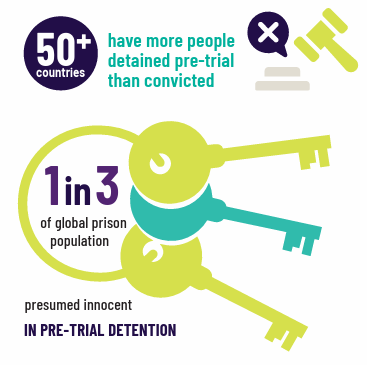At the SAW Project, we promote the sharing of successful community-based supervision practices that keep people out of jails and prisons, while still holding them accountable for misdeeds. Research has shown that people can be effectively monitored in the community rather than be incarcerated.[1] Whether this supervision is prior to adjudication (pre-trial) or post-conviction (direct sentence/early release on probation/parole), these alternatives to incarceration are vital to sustainable corrections systems.
Alternatives to such incarceration are crucial for several reasons:
- Reducing Recidivism: Many traditional forms of incarceration do little to address the underlying causes of criminal behavior. Alternatives such as rehabilitation programs, community service, or restorative justice approaches can target the root causes of criminal behavior, reducing the likelihood of individuals re-offending.
- Cost-Effectiveness: Incarceration is expensive, both in terms of financial costs to taxpayers and in terms of the societal costs associated with lost productivity and disrupted families. Alternatives such as probation, parole, electronic monitoring, or drug courts can be more cost-effective while still holding individuals accountable for their actions.
- Preserving Families and Communities: Imprisonment often disrupts families and communities, leading to negative social consequences such as children growing up without parents, increased poverty, and decreased community cohesion. Alternatives that allow individuals to remain connected to their families and communities can help mitigate these negative effects.
- Addressing Overcrowding: Many prison systems around the world are overcrowded, leading to unsafe and unhealthy conditions for both inmates and staff. Alternatives to incarceration can help alleviate overcrowding by diverting non-violent offenders away from prison and into alternative programs.
- Promoting Rehabilitation and Reintegration: Alternatives such as drug treatment programs, mental health counseling, and educational or vocational training can help individuals address the issues that contributed to their criminal behavior and develop the skills they need to reintegrate successfully into society.
- Promoting Fairness and Equity: Traditional forms of incarceration disproportionately affect marginalized communities, including people of color and those from low-income backgrounds. Alternatives that focus on addressing the underlying causes of crime rather than simply punishing individuals can help reduce disparities in the criminal justice system.
Alternatives to incarceration offer a more holistic and effective approach to addressing crime and promoting public safety while also addressing the underlying social issues that contribute to criminal behavior. Imprisoning every wrong-doer wastes already inadequate resources and causes additional problems for the individuals, families, as well as involved communities.
At the SAW Project we are committed to sharing information about successful alternatives and supportive elements. Including such practices in local corrections systems is proven to promote safer communities, at a lessor cost than incarceration, and also reduce the harm to justice-involved individuals and their families.
[1] Drake EK. The monetary benefits and costs of community supervision. Journal of Contemporary Criminal Justice. 2018;34(1):47–68.

